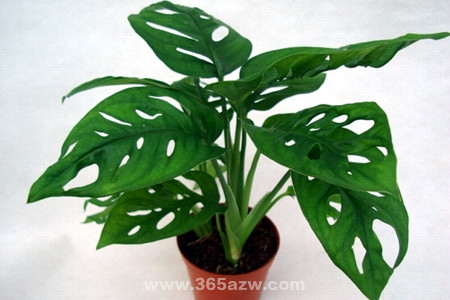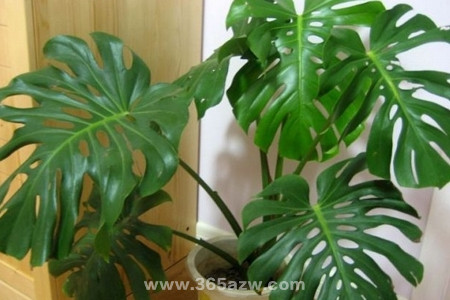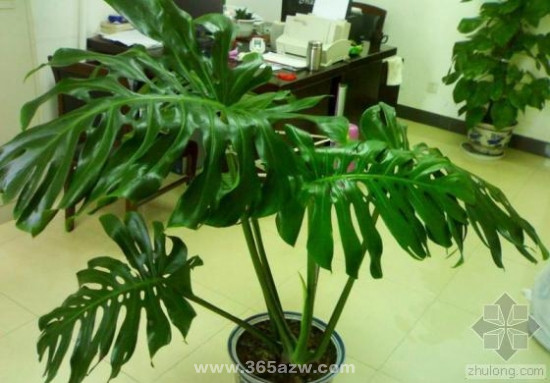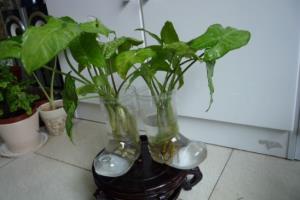Culture methods and matters needing attention of tortoise back bamboo: watering | attention should be paid to binding and plastic surgery
The plant of the tortoise back bamboo is an evergreen vine, which is named because it has leaves similar to the tortoise back of a thousand years and bamboo-like stems. The indoor-grown tortoise-backed bamboo rarely blossoms and is a famous foliage plant. So how is the tortoise back bamboo cultured? Is there any good method in breeding? What matters do we need to pay attention to in breeding? Please read on with me with questions.

The culture method of tortoise back bamboo (basic knowledge):
The best breeding time: the stem node can be inserted in spring and autumn, and the effect is the best in April-May in spring and September-October in autumn.
The best growth soil: the slightly acidic loam with loose fertility, large water absorption and good water retention should be maintained when culturing tortoise back bamboo, and rotten leaf soil or peat soil is often the best. The pot of tortoise back bamboo should be cultivated in a large pot, with a 1.3 to 1.5 meter wooden stick, inserted in the basin, planted with tortoise back bamboo, one to prevent lodging and the second attached column to grow luxuriantly.
Growth humidity requirements: the soil of breeding tortoise back bamboo can be kept moist. It is necessary to spray water frequently in summer to maintain high air humidity and leaves are often kept clean to facilitate photosynthesis.
The best growth temperature: tortoise back bamboo likes to warm and moisturize, and it can grow well at normal room temperature. It is not cold-resistant and the overwintering temperature is required to be above 5 ℃.
The best growth light: tortoise back bamboo shade-resistant, avoid direct sunlight, as a pot placed in the indoor light is the most suitable.

Precautions for culturing tortoise-backed bamboos:
Application of fertilizer: during the normal growth period, dilute liquid fertilizer was applied every 2 weeks or so.
Main points of reproduction:
1. Striping propagation: it can be carried out from May to August, and it can leave the mother plant and become a new plant after about 3 months.
2. Cuttage propagation: the nodal part can be cut off from the stem every spring, preferably with 2 nodes and leaves inserted directly into the planting pot, poured with water and placed in a warm, humid, sunshaded place to take root in about a month.
Pruning essentials: the tortoise back bamboo is a large foliage plant with large stems and thick leaves, especially when the ramets of adult plants should be set up to avoid lodging metamorphosis. The bracket is removed after it is finalized. At the same time, when the leaves of the stem nodes grow too dense and the branches grow too long, pay attention to the pruning of the whole plant and strive for natural beauty.
Watering key points: during the growth period, the water should be sufficient, and the culture soil should be kept moist every 2-3 days. When the weather is dry, water should also be sprayed to the leaves to keep the air moist.
Basin soil replacement: the basin needs to be changed once a year. The time to change the basin should be between March and April. When changing the basin, remove the old soil, cut off the withered roots, and then add mature organic fertilizer or phosphorus and potash fertilizer as base fertilizer.
Pest control: tortoise-backed bamboo is very vulnerable to shell insects, and its stems and leaves are most vulnerable to shell insects. It can be sprayed with 1000 times omethoate after cleaning with an old toothbrush. The common diseases of tortoise back bamboo are leaf spot, gray spot and stem blight, so we should pay attention to timely control.

The experience of breeding tortoise-backed bamboo:
The molded plants should also pay attention to shading in the middle of summer, otherwise the leaves will age and lack of natural luster, which will affect the ornamental value.
2. Fear of dry air. Tortoise back bamboo grows naturally in the tropical rain forest and likes to be moist, but the potting soil will also rot the roots, make the plant stop growing, the leaves droop, lose luster, and the leaves are uneven. Watering should grasp the principle of rather wet than dry, often keep the basin soil wet, but not stagnant water, watering every 2-3 days in spring and autumn. In the midsummer season, in addition to watering every day, water should be sprayed many times to keep the leaves fresh, and hanging cultivation should be sprayed more frequently. In winter, the evaporation of leaves is weakened, and the amount of watering water is reduced.
3. Apply thin fertilizer frequently. Phyllostachys pubescens is a more fertilizer-tolerant foliage plant, in order to make more new leaves, green leaves with natural luster, fertilizer is applied once a month during the growing period, be careful not to let the fertilizer liquid stain the leaves. At the same time, the root of tortoise back bamboo is relatively tender, do not apply raw fertilizer and thick fertilizer, so as not to burn roots. It is best to use "Huiyou" 20Mel 8Mel 20 with high potassium nitrate fertilizer and 20Mel 20Mel 20 general fertilizer in four seasons, which is more beneficial to the growth of tortoise back bamboo.
4. Need to be bound and reshaped. Phyllostachys pubescens is a large foliage plant with large thick stems and leaves, especially when the ramets of adult plants should be framed and tied to avoid lodging. The bracket is removed after it is finalized. At the same time, when the leaves of the stem nodes grow too dense and the branches grow too long, pay attention to the pruning of the whole plant and strive for natural beauty.
Related
- Wuhan Hospital Iron Tree Blooming Result Was Instantly Frightened by the Gardener Master
- Which variety of camellia is the most fragrant and best? Which one do you like best?
- What is the small blue coat, the breeding methods and matters needing attention of the succulent plant
- Dormancy time and maintenance management of succulent plants during dormancy
- Minas succulent how to raise, Minas succulent plant pictures
- What are the varieties of winter succulent plants
- How to raise succulent plants in twelve rolls? let's take a look at some experience of breeding twelve rolls.
- Attention should be paid to water control for succulent plants during dormant period (winter and summer)
- Watering experience of twelve rolls of succulent plants
- Techniques for fertilizing succulent plants. An article will let you know how to fertilize succulent plants.



